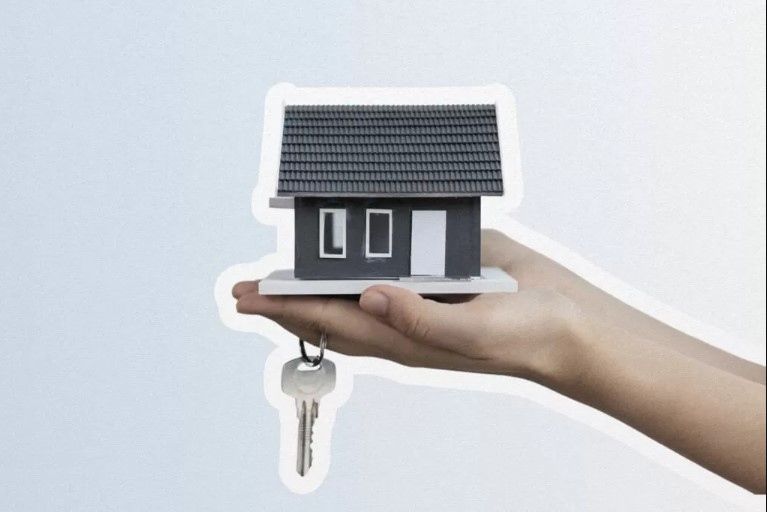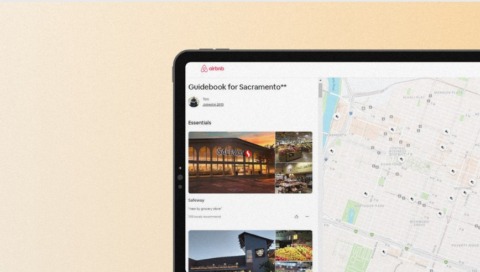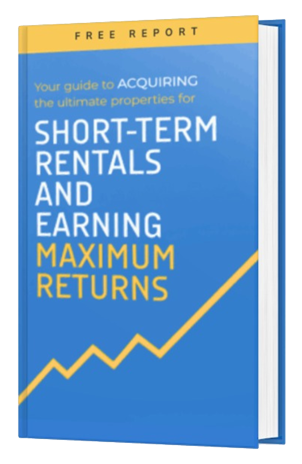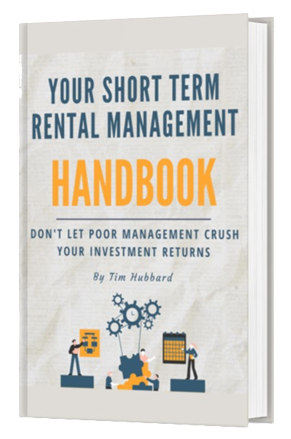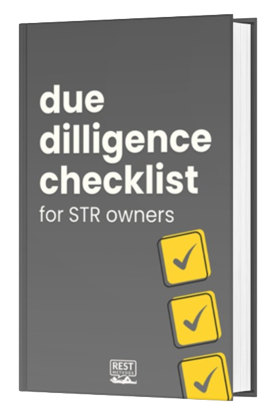The global short-term rental market is on track to be worth $113 billion by 2027. It’s a figure that’s hard to ignore, especially if you’re considering a venture into this growing sector.
In this detailed guide, we’ll explore how to get started with short-term rentals. We’ll cover everything from initial planning to ongoing management, ensuring you have all the tools you need to make informed decisions.
So, if you’re contemplating turning an extra room or property into a steady income stream, you’re in the right place.
Download The 16 Page Guide to Acquiring The Right Property For STR Returns
The type of property and its location can make or break your investment.
Don’t “bet the house” on the wrong property.
Find out how to determine the right markets and properties for better, safer returns…


Step 1: Research and Planning
Your first pit stop should be market research. Think of it as the reconnaissance mission before the main event. You need to know what you’re up against and what opportunities lie ahead.
Start by scouring popular platforms like Airbnb and Booking.com. These sites can offer a wealth of information on the number of listings in your target area, their occupancy rates, and how they’re priced. Don’t just skim through; dig deep.
Look at the reviews, the amenities offered, and even the little extras that make a property stand out. This will not only give you an idea of the competition but also help you gauge the potential profitability of your own listing.
Determine how much money you have or can gather for investment. Make sure you talk to lenders ahead of time to know your financing options.
Tim Hubbard
Market Research Checklist
Platform Selection
Identify which platforms are popular in your target area. Airbnb, VRBO and Booking.com are usually good starting points.
Number of Listings
Check the total number of listings in your desired location. A high number could indicate a saturated market, while a low number might signify untapped potential.
Occupancy Rates
Pricing Strategy
Examine how properties are priced. Are they using dynamic pricing? What’s the average nightly rate? To do this use PriceLabs or Wheelhouse for in depth analysis.
Guest Reviews
Read through guest reviews to understand what travelers like or dislike about existing listings. This can offer insights into what you should or shouldn’t do.
Amenities
Make a list of common amenities offered. This will help you understand what guests expect. Tip: Look at the most popular listings, see what they have, and try to mirror them.
Unique Features
Note any unique features or extras that make certain listings stand out. This could be anything from a hot tub to a complimentary breakfast.
Host Profiles
Take a look at the profiles of successful hosts. How long have they been active? Do they have multiple listings? This can give you an idea of who you’re competing against.
Local Laws and Regulations
Briefly check if there are any local laws or regulations that might affect short-term rentals in your target area.
Seasonal Trends
Are there specific times of the year when demand spikes? Knowing the high and low seasons can help you plan better.
Cancellation Policies
What kind of cancellation policies are commonly used? This can affect your own policy decisions.
Budget Planning

Money talks, especially in real estate. You need to know your numbers, and I mean really know them. Create a comprehensive spreadsheet that outlines every conceivable cost. This should include (but not limited to)
- booking fees
- insurance costs
- mortgage payments
- property tax
- housekeeping expenses
- supplies
- cleaning charges
- maintenance expenses
- utility expenses
- and even a contingency fund for those unexpected hiccups
Why is this so crucial, you ask? Well, having a well-defined budget will serve as your financial roadmap. It will help you set realistic expectations and, more importantly, keep you from biting off more than you can chew. The last thing you want is to be blindsided by costs you didn’t anticipate.
Financial Availability
Alright, let’s talk finances. How much money are you willing and able to invest in this venture? If you’re not exactly flush with cash, don’t let that deter you. The beauty of the short-term rental market is its accessibility. You don’t need to be a millionaire to get started; you just need to be resourceful.
Explore various financing options that are available to you. Traditional bank loans are always a solid choice, but they’re not the only game in town.
Seller financing is another avenue where the property owner acts as the lender, offering a flexible and often more accessible route for potential buyers.
Lenders are your allies in this journey. They can provide you with tailored financial packages that align with your investment goals. So don’t hesitate to reach out and have that conversation.
Step 2: Legal and Regulatory Compliance
Before you start raking in the cash, you’ve got to get your legal ducks in a row. Register your business for tax purposes with the relevant local or state agencies. Trust me, the last thing you want is Uncle Sam knocking on your door asking for his share.
Also a comprehensive short-term rental agreement is a must. This legal document will outline the terms and conditions between you and your guests, providing a safety net for both parties. Airbnb refers to this as their house rules.
Get My Proven Airbnb
House Rules Template
After hosting over 30,000+ guests, these 12 proven House Rules will protect you from just about anything…
Step 3: Property Selection and Setup

The million-dollar question: what type of property should you invest in? Whether it’s an urban apartment, a suburban home, or a beachside villa, the choice is yours. But remember, different properties cater to different audiences.
Property Renovation
Unless you’ve struck gold and found a property in mint condition, chances are you’ll need to roll up your sleeves and get to work. Renovations can range from a fresh coat of paint to a full-blown makeover. Just make sure whatever you do adds value to the property.
Time Investment
Time is money. Assess how much time you can realistically invest in managing your property. If you’re short on time, consider hiring a property management company. They’ll handle everything from bookings to maintenance, allowing you to sit back and enjoy the passive income.
Step 4: Market and Location
Location, location, location! It’s the golden rule of real estate. Initially, you might be tempted to stick to what you know, but don’t let familiarity hold you back. Explore other markets that offer high returns on investment.
Most people when they get started they invest in their backyard because that's what they're familiar with. But the reality is many times there's far better returns outside of your local neighborhood. As investors, we should be living where we want to live, but investing where it makes most sense.
Tim Hubbard
Once you’ve zeroed in on a market, get granular with your research. Look into specific zip codes to understand property values, demand, and competition. This will help you identify the most lucrative pockets within your chosen market.
Step 5: Business Structure
To LLC or not to LLC, that is the question. Registering your short-term rental as an LLC can offer financial benefits and protect your personal assets and it’s often the easiest and most cost efficient form of protection, but consult a professional or a legal advisor to determine the best structure for your business.
Step 6: Marketing and Promotion
If you build it, they will come—only if they know it exists! A robust marketing strategy is crucial to get the word out about your property. Utilize social media, SEO, and even good old word-of-mouth to attract guests.
Also, don’t put all your eggs in one basket. List your property on multiple booking channels like Airbnb, Booking.com, and Vrbo to maximize visibility and revenue.
Step 7: Operations and Management
Keep a meticulous record of all bookings, guest information, and payments. This will help you manage your property efficiently and provide valuable insights into guest preferences and behaviors.
As for cleaning and maintenance, first impressions last. A clean and well-maintained property is more likely to receive positive reviews, leading to more bookings. So, roll up those sleeves or hire a professional cleaning service to keep your property spick and span.
And last but not least, before you sign on the dotted line, do your homework. Conduct thorough financial and physical due diligence to ensure the property is a good investment. Check for any hidden costs or structural issues that could turn your dream project into a money pit.
Perform financial and physical due diligence before finalizing any property. This includes checking if the property will cash flow positively as a short-term rental. If you find a property that you think makes sense but then you run the numbers and it doesn’t cash flow, back out of that one, don’t spend any more time on it.
Tim Hubbard
Step 8: Team Building and Review

Rome wasn’t built in a day, and certainly not by one person. Build a team of professionals, like real estate agents and legal advisors, who can guide you through the complexities of the short-term rental business.
Team Building Checklist
Real estate agent
Someone who specializes in short-term rentals and understands the local market.
Legal advisor
To help you with contracts, local laws, and any legal disputes that may arise.
Accountant
For managing your finances, taxes, and helping you understand your cash flow.
Property Manager
Especially important if you won’t be near the property or if you have multiple listings.
Cleaning Crew
A reliable team or individual who can ensure your property is spotless for each new guest.
Maintenance Personnel
To handle any repairs or upkeep, ensuring your property remains in top condition.
Interior Designer
Optional, but can help make your property more appealing to potential guests.
Customer Service
Someone to manage bookings, answer queries, and handle any issues that guests may have during their stay.
Local Partners
Think about local businesses that can enhance your guests’ experience, like tour operators or restaurants, and consider forming partnerships.
Performance Metrics
Last but not least, keep an eye on the prize. Regularly review key performance indicators like occupancy rates, average daily rates, and guest reviews to fine-tune your business strategy.
Performance Metrics Checklist
Occupancy rate
This is the bread and butter of your business. A low rate might indicate a need for better marketing or a review of your pricing strategy.
Average Daily Rate (ADR)
This helps you understand your revenue potential. Is it in line with your initial projections?
Revenue Per Available Room (RevPAR)
This metric combines your occupancy rate and ADR to give you an overall picture of your financial health.
Guest reviews and ratings
Keep an eye on these as they can make or break your business. Address any negative reviews professionally and make necessary adjustments.
Customer retention rate
Are guests coming back or recommending your property to others? A high retention rate is a good sign.
Operational costs
Regularly review your expenses. Are you going over budget on maintenance or cleaning? Time to renegotiate contracts or find new vendors.
Response rate
How quickly are you or your customer service team responding to inquiries or issues? Speed is often key in customer satisfaction.
Website traffic
If you have a dedicated website, monitor how much traffic it’s getting and consider ways to improve its SEO.
Social media engagement
Are your social media posts getting likes, shares, and comments? This can be a good indicator of your brand’s popularity.
Final Thoughts
And there you have it, folks—a comprehensive guide on how to get started with short-term rentals. From market research to team building, each step is a building block to your empire of profitable short-term rentals. So, what are you waiting for? Dive in and let the adventure begin!

